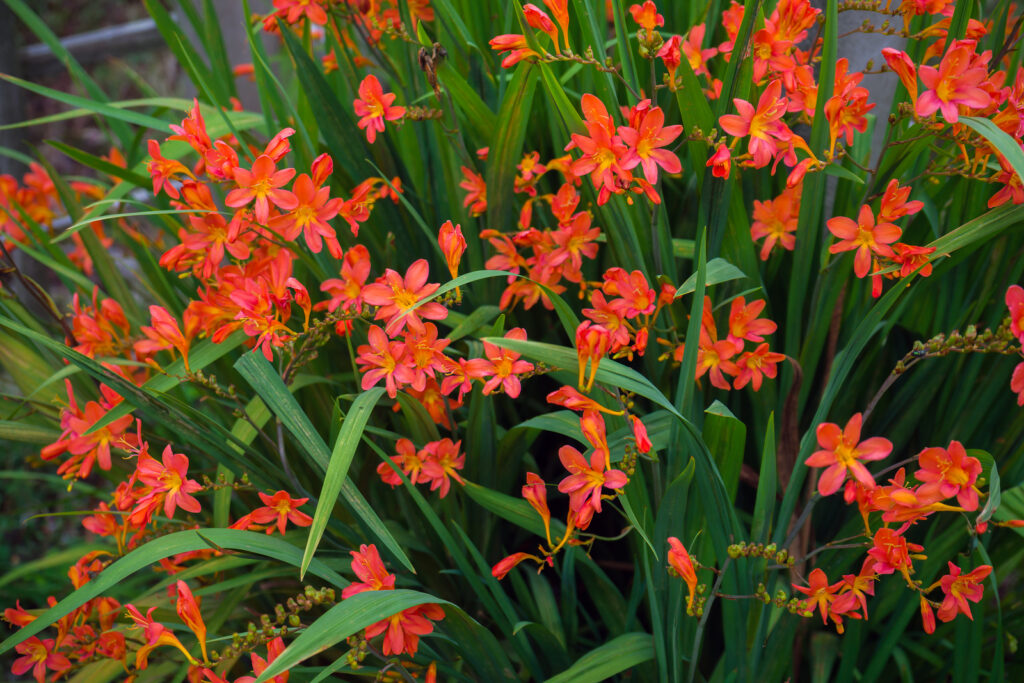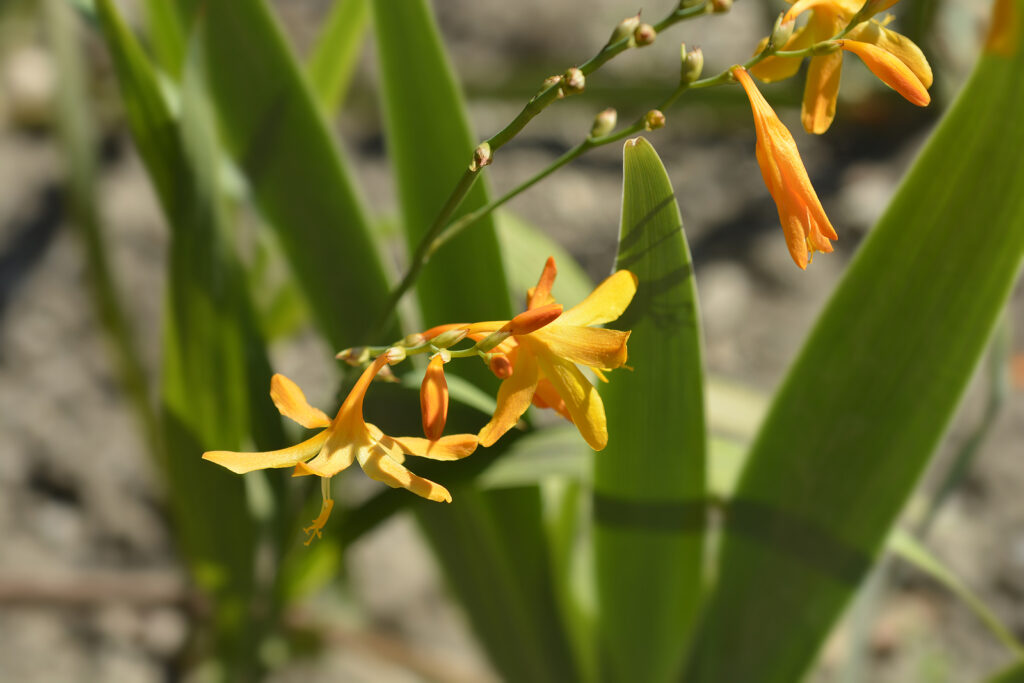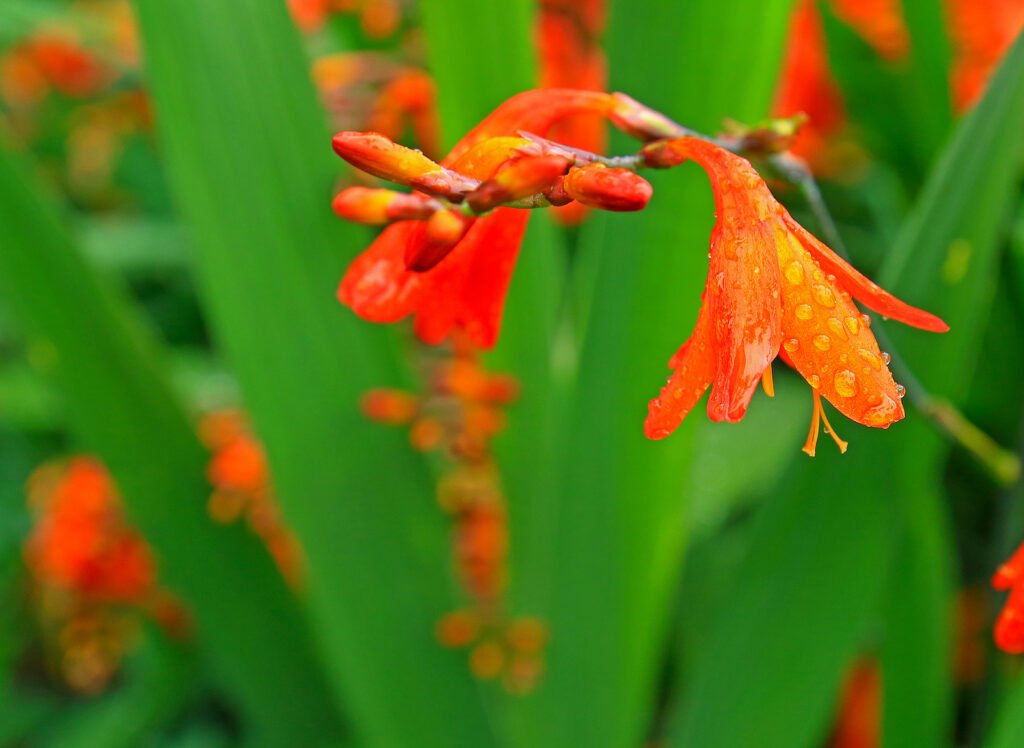Crocosmia bear funnel-shaped, brightly colored flower in mid- and late summer. Flowers are borne from branched spiked on wiry stems. Crocosmia is a clump-forming perennial with linear, lance-shaped leaves.
Crocosmia is native to tropical and southern Africa. It was formerly known as Tritonia and often goes by the common name Montbretia. It is related to the flowering bulbs freesia, ixia, and sparaxis.
Crocosmia’s small flowers can be orange, red, or yellow. Blooms appear in summer on branched stems. Sword-shaped leaves grow in basal clumps.
Grow Crocosmia in beds and borders and in cutting gardens. Where winter temperatures remain greater than 10
Grow Crocosmia in beds and borders and in cutting gardens. Where winter temperatures remain greater than 10
Grow Crocosmia in beds and borders and in cutting gardens. Where winter temperatures remain greater than 10°F (-12°C), Crocosmia can be grown without winter protection.

Get to know Crocosmia
- Plant type: Perennial corm
- Growing Zones and range: Zones 6 to 9
- Hardiness: Half-hardy; hardy to 10°F (-12°C)
- Height and width: 24 to 36 inches (61-91cm) tall, 12 inches (30cm) wide
- Foliage: Ribbed linear to swordlike leaves grown in clumps
- Flowers: Flowers borne on arching spikes or panicles are tubular to funnel-shaped with six spreading lobes, or petal-like tepals; blooms in bright colors–reds, oranges, and yellow
- Bloom time: Midsummer to late summer
- Uses: Beds, borders, massed in large groups or smaller groups in the mixed border
- Common name: Montbretia, Crocosmia, copper tips
- Botanical name: Crocosmia x crocosmiiflora
- Family: Iridaceae
Where to plant Crocosmia
- Plant crocosmia in full sun or light shade. Light shade is best in hot summer regions.
- Crocosmia can remain in the garden year-round in Zones 6 to 9. Where they are marginally hardy plant them in a warm spot against a south-facing wall.
- Grow crocosmia in average to humus-rich, well-drained soil.
- Crocosmia prefers a soil pH of 6.5 to 7.5.

When to plant Crocosmia
- Plant corms in spring 3 to 5 inches deep after all danger of all frost has passed.
- Work in a slow-release fertilizer at planting time and every spring or every other spring thereafter.
Planting and spacing Crocosmia
- Space Crocosmia 12 inches (30cm) apart. The plant forms dense clumps over time.
- Set corms 3 to 4 inches (7.6-10cm) deep.
How to water and feed Crocosmia
- Crocosmia grows best with moderate water; keep the soil evenly moist. Established plants are drought tolerant.
- Fertilize crocosmia with a slow-release fertilizer applied to the soil in spring.

Crocosmia care
- In the fall in Zone 6, provide a thick layer of winter-protecting mulch. Mulch is especially important the first year after planting.
- Lit corms in fall in Zone 5 and cooler; store corms in a cool place over winter packed in dry sand at 35° to 40°F (1.7°-4.4°C).
- Spider mites may attack crocosmia.
Crocosmia propagation
- Lift and divide clumps in spring to maintain vigor.
- When plants begin to bloom less often, they should be divided and replanted.

Crocosmia varieties to grow
- Crocosmia x crocosmiiflora, Crocosmia, Montbretia. Grows 24 to 36 inches (61-91cm) tall; bears arching spikes which may be branches and 1 to 2 inches (2.5-5cm) orange or yellow flowers in summer.
- C. hybrids. Many cultivars including ‘Lucifer’ which is red-orange and is hardy to Zone 5, ‘Emberglow’ with dark red flowers, ‘Citronella’ with yellow blooms, and ‘Venus’ with bicolored orange-red and yellow blooms.
- C. masoniogrum. Species grow to 4 feet (1.2m) tall with orange-red flowers over pleated leaves.















